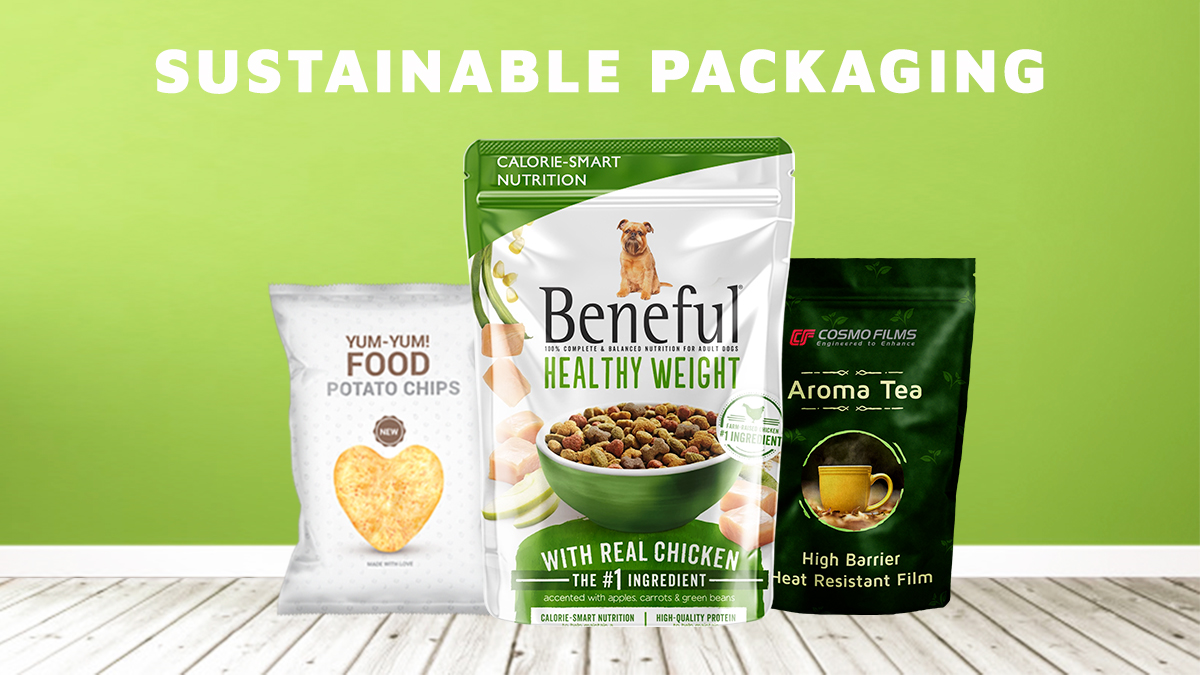Sustainability is a concern for governments, businesses, and people worldwide. According to studies conducted by global business houses, 39% of consumers check for beverage packaging’s environmental information before buying, and 66% of consumers avoid a certain brand/product due to environmental concerns.
With the packaging industry’s dependency on the use of plastics, the questions of sustainability are now more important than ever. As a result, the industry has seen a major shift to sustainable packaging by embarking upon the three R’s—reduce, reuse, and recycle. Packaging manufacturers are now conducting intensive research and development to come out with solutions that require reduced use of raw materials, allow for the reuse of packages, and provide ease of recyclability.
Constant efforts are made and products like BOPP films have already been introduced to facilitate easy recycling. The following efforts truly define the goals of sustainable packaging.
Increasing Energy and Water Efficiency
Packaging experts need to aim at reducing the use of energy and water in the manufacturing process. This can be achieved by substituting the packaging material used with better and more efficient substances or by changing the process. The shift from rigid packaging like glass to flexible packaging is one of the greatest examples. By reducing the amount of energy and water used in the manufacturing process, we reduce greenhouse gas emissions and resource exploitation.
Minimizing Raw Material
Reducing the primary material used in packaging production is the key to maintaining sustainability. This can be done by reaching an optimal blend of primary, secondary, and tertiary materials that can be recycled together. However, one cannot completely avoid the use of primary material, as it prevents damage and waste. The World Packaging Organization argues that having no packaging at all is worse than using raw materials to create packaging because it can result in far more waste by spoiled products. Thus, it is wise to use packaging judiciously by focusing on the right size and the right strength required.
Using Recycled Materials
The use of recycled materials for packaging can help reduce the industry’s environmental footprint drastically. Recycled materials not only help in reducing waste production but also require less energy as compared to virgin materials in some cases.
Designing Renewable and Reusable Packaging
Packaging designers need to maximize the use of renewable materials for manufacturing packaging products. This saves energy, natural resources, and helps achieve sustainability efficiently. Also, packaging can be designed to facilitate reuse. For instance, the use of resealable bags for packaging allows consumers to reuse the bag. However, people rarely do so and that is why recovery for recycling may be a more promising solution.
Facilitating an Efficient Use of Transport
The packaging design should be transport-friendly. This means that designers should consider factors like reducing weight, maximizing space usage, and utilizing bulk packaging where possible. These small steps facilitate the efficient use of transport and help reduce energy consumption. Packaging that is designed with bulk transport in mind (and not just single-item) helps in cubing out—filling shipping containers effectively—for shipping. People have also started to source products from local dealers to reduce the environmental impact caused by transportation.
Creating Consumer Awareness
Statistics tell us a lot about consumer inclination toward eco-friendly packaging. People are increasingly becoming aware of environmental concerns. However, many still share the use-and-throw attitude. Packaging designers should make sure that, through their design, they increase awareness among consumers by providing information like the types of materials used in packaging and disposal guidelines that enable recycling.
Sustainable packaging that is aimed at reducing the carbon footprint at every stage, from manufacturing to disposal, is the need of the hour. Responsible packaging producers have been continuously involved in aggressive research and development to come up with economical and recyclable packaging solutions.
Aman Dalal is IT Manager at Cosmo Films, a specialty films manufacturer based in India; its portfolio includes a range of films that facilitate a circular economy.
